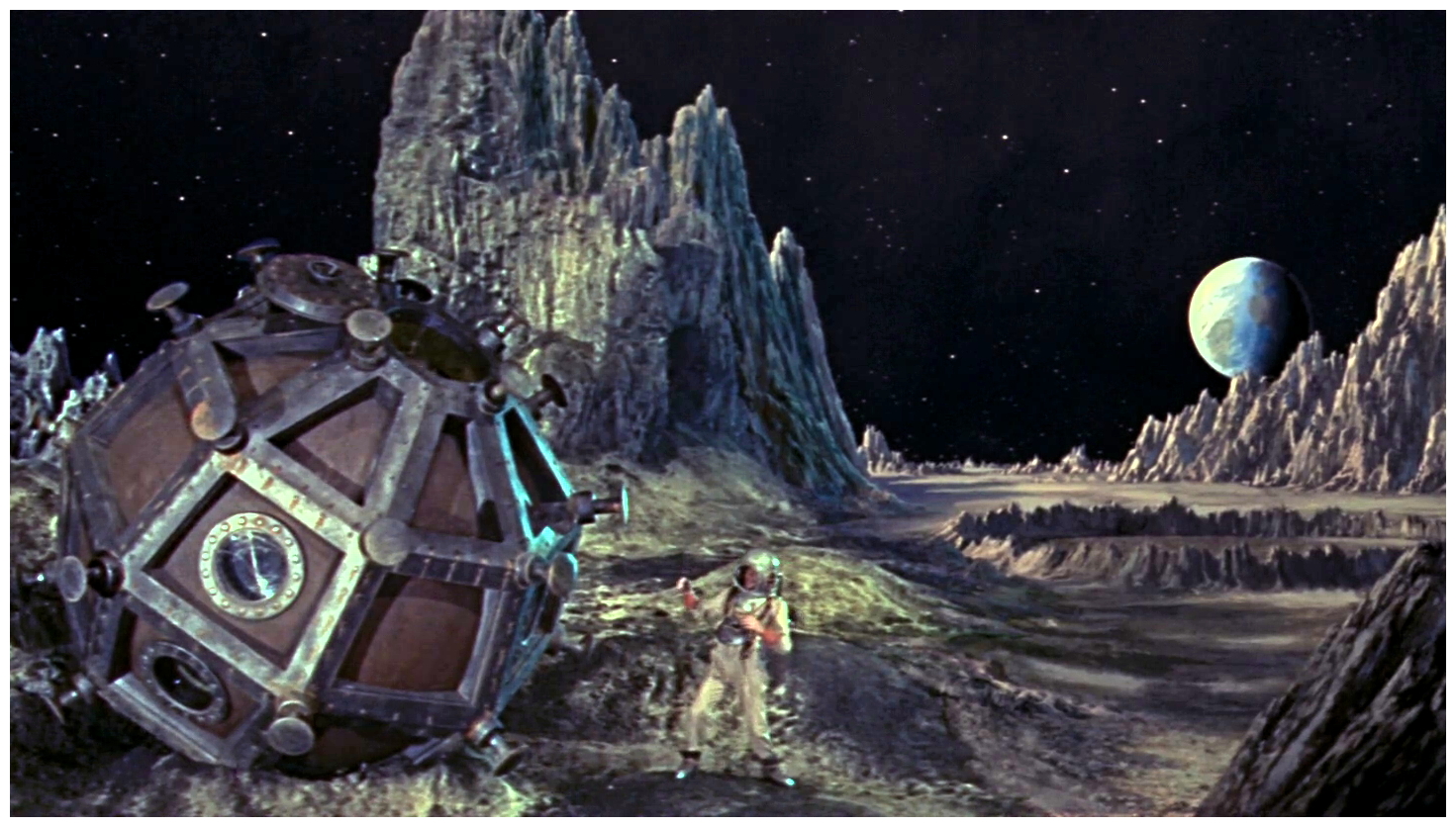

If, in the early part of the 21st century, you are coming to the original The First Men in the Moon novel fresh then you do need to bear in mind that it was written over a century earlier and that the English language has drifted: for some this might make reading the book a little harder.

(The 1964 film did though have a neat framing device in that US astronauts from the then future first landing on the Moon discover signs left behind of the previously unknown Cavor 'mission'.) Of course if you are of a different age you might know of The First Men in the Moon through one or both of the 2010 visual offerings: one an animation film and the other a BBC made-for-TV film. It has to be said that that adaptation was interesting even if it was not perfectly faithful: there is an extra traveller accompanying Cavor, the air is absent from the surface (not just frozen at night) among other changes. If you have not read The First Men in the Moon (which may be why you are reading this review) the chances are that if you are of a certain age your knowledge of the book is tainted by the entertaining 1964 film directed by Nathan ( 20 Million Miles to Earth) Juran with a screenplay by Nigel Kneale and Jan Read. (Incidentally, all of which apart from the last, Gollancz a decade ago re-published in a single, omnibus edition.) With regards to his overall oeuvre, The First Men in the Moon was written just a sixth of the way through Wells' novel-writing career but at the end of his six-year intense period of writing when he produced a novel a year a period which included nearly all of his major classics, including: The Time Machine (1895), The Island of Doctor Moreau (1896), The Invisible Man (1897), The War of the Worlds (1898) and The Sleeper Awakes (1899). Wells is, of course, Britain's grandfather of modern SF (Mary Shelley being its grandmother). They also discover that there is life and, as the novel progresses, they realise that there is more, far more, beneath the lunar surface than anyone realised… As the Sun rises they discover that the Moon's air had been frozen during the night, but during the day it becomes gaseous again.

They land on the airless lunar surface just before daybreak. Making it airtight they try it out with an expedition to the Moon. The two construct a sphere surrounded by the gravity-blocking cavorite. Bedford becomes intrigued seeing the commercial potential of such a discovery and so offers to help. It transpires that this person, Mr Cavor, lives nearby and is trying to create a substance that blocks gravity. Playwright, Mr Bedford, is staying in the countryside trying to get his muse for his next play when his thoughts are interrupted every afternoon by a passing, humming man. The January 2017 paperback release comes 151 years after Well's birth and 71 years after his death: given the prices, seek out the hardback if you can. This is a very welcome hardback SF Masterwork 2013 reprint of the well-known 1901 Wells novel. Review of The First Men in the Moon by H.


 0 kommentar(er)
0 kommentar(er)
